The Apple iPad Air 2 Review
by Joshua Ho on November 7, 2014 9:30 AM EST- Posted in
- Tablets
- Apple
- Mobile
- iOS
- ipad Air 2
GPU Performance
On the GPU side of things the iPad Air 2 seems to have a GX6650, which should provide a healthy boost to GPU performance when compared to the GX6450 in the A8. Apple has placed a strong emphasis on gaming for their iPad line, so there are some obvious comparisons to be made between NVIDIA's Tegra K1 and the A8X as well. To test this, we use a suite of benchmarks that can give a good idea of real world gaming performance.
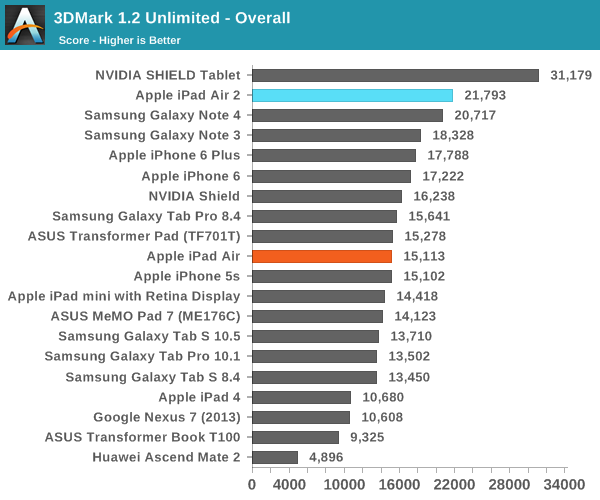
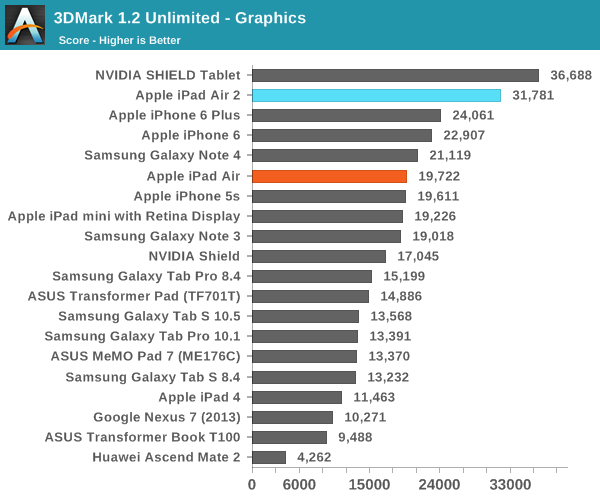
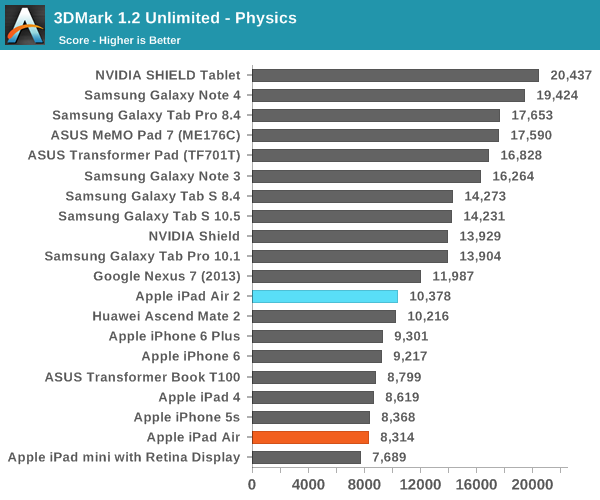
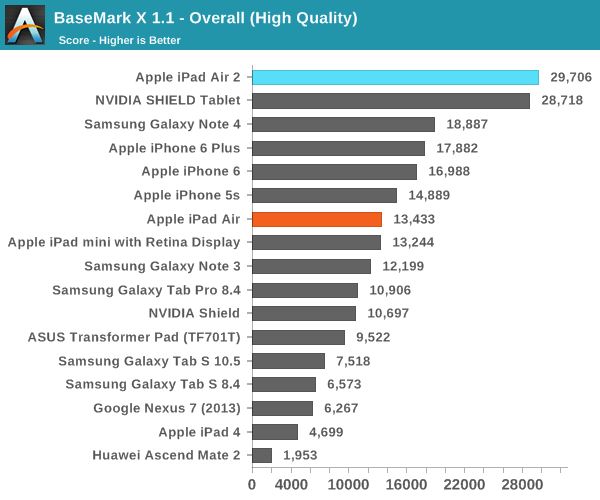
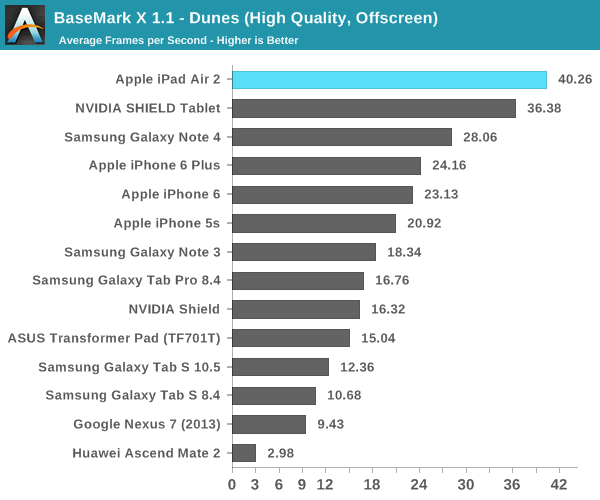
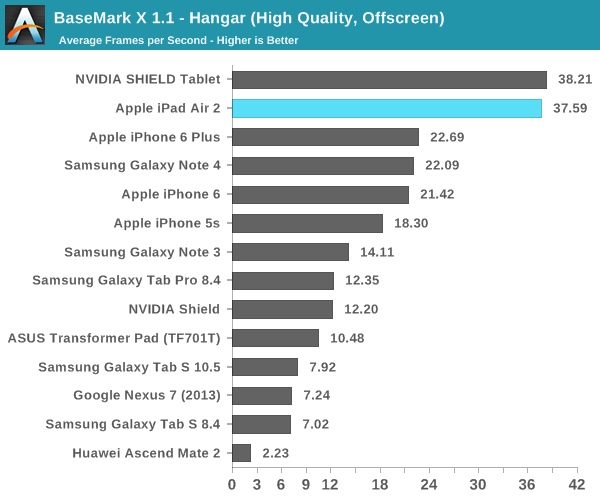
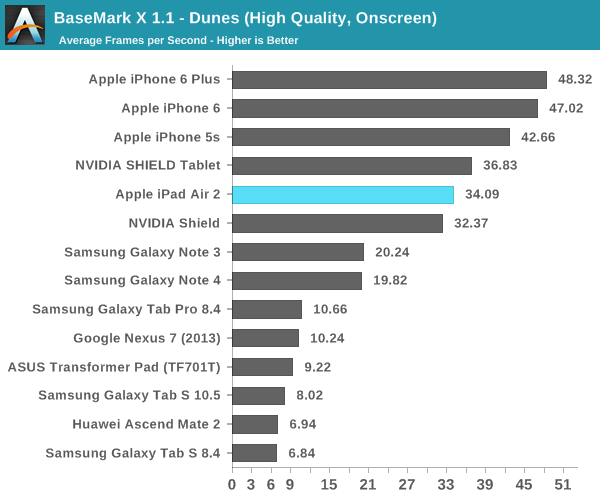

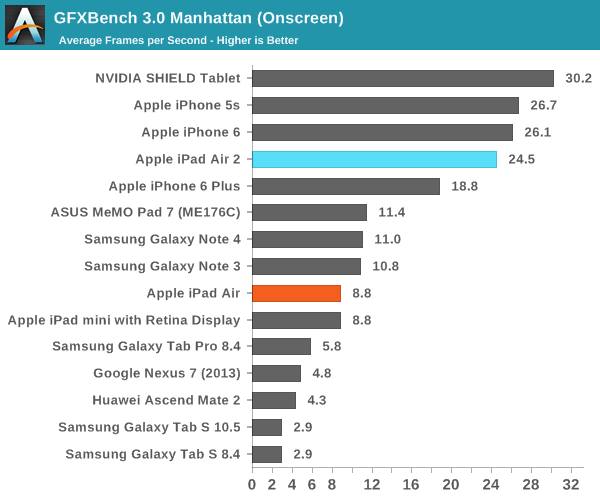

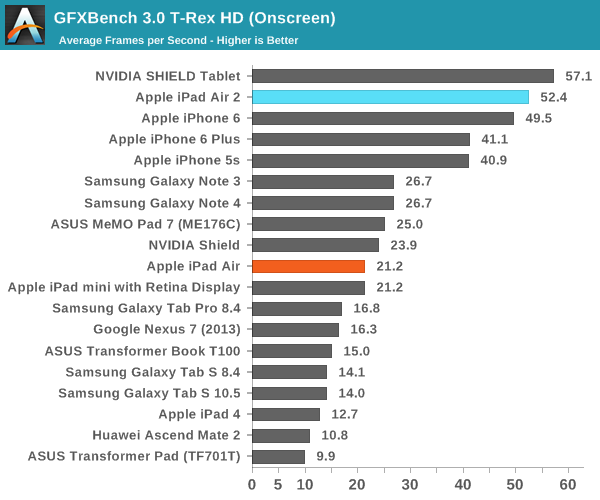

In practice, while we see that the A8X's GPU is extremely close to Nvidia's single Kepler SMX across the board, with the sole exception of 3DMark which seems to be due to the dependencies present in the physics test that dramatically lower the overall score. NVIDIA's Tegra K1 seemed incredible for its GPU performance earlier this year, so it's just as surprising to see Apple successfully rival NVIDIA in this area. Of course, GPU performance is a function of both peak performance and sustained performance, so we'll have to look at the GFXBench battery rundown test to get the full picture here. If Apple can deliver far superior performance and battery life in such a situation, it's pretty clear that the jump to 20nm will be critical to pushing the limits on what's possible in a mobile device.
NAND Performance
As we've seen before on some tablets, poor storage performance can cause major issues with the overall experience as I/O pauses can far exceed just a few frame drops that one might expect from cases of UI lag induced by insufficient performance elsewhere. In order to attempt to quantify this performance we use a custom utility developed by Eric Patno. While such testing is far from a complete look at performance, this can give a rough idea of what to expect.
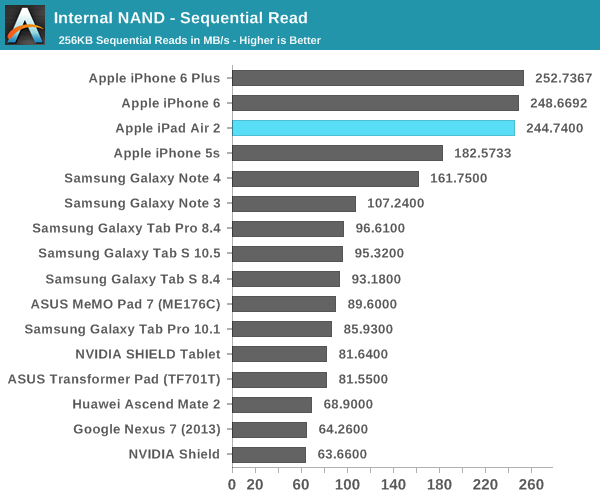
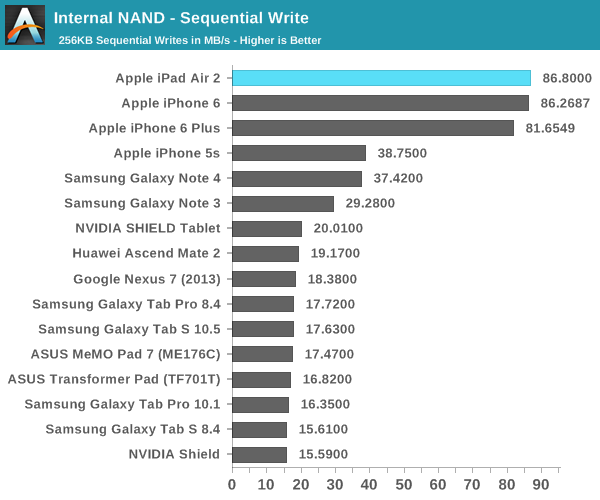
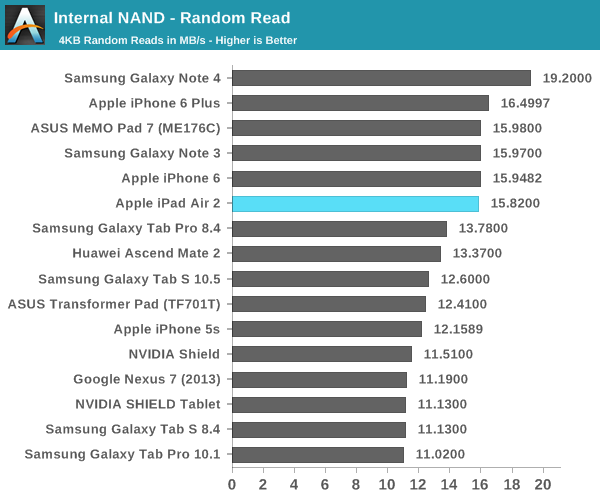

Overall, it seems that Apple does quite well on the storage tests. It seems that the iPad Air 2 shares its storage solution with the iPhone 6. While I don't have an iPad Air on hand for testing, it should match quite closely to the iPhone 5s. This represents a generally high-quality NAND solution, but as mentioned before random I/O could stand to improve a bit. Compared to most of the lower-cost Android tablets it's definitely as good as it gets though.










226 Comments
View All Comments
Sushisamurai - Friday, November 7, 2014 - link
I know right? It's actually really annoying, it's practically forced me to prop it up when using it for TV/movies because holding a vibrating tablet for 40 minutes was a huge pain the in the ass. I'd rather they keep the same size as the iPad Air 1, and just give me 2-4 more hours of use time (by keeping the battery size the same, increased efficiency of A8X) and NO VIBRATING tablet.Sushisamurai - Friday, November 7, 2014 - link
No, my iPad Air 2 does not reproduce this issue, even with full strength one finger push (erred on the side of not bending my iPad). However, I do have a hard plastic back case (thin) on it - applying pressure to the screen also does not produce any issues.Georges003 - Saturday, November 8, 2014 - link
I am apparently not the only one who has noticed this effect on the Air 2. See:http://www.consumerreports.org/cro/news/2014/10/ha...
http://forums.macrumors.com/showthread.php?t=18089...
hammer256 - Friday, November 7, 2014 - link
I recall it was said that Nvidia was not going to use the TSMC 20nm because it's only really ready for SoC production, perhaps because the yield is not good enough for large dies yet? But if the 20nm process can already produce chips with 3 billion transistors at presumably acceptable yield, that is well into the GPU transistor count territory.I just wonder if this holds any indication/promise that Nvidia and AMD could move to 20nm in a relatively quick time frame, say within the next year. 28nm is really getting long in the tooth. Well, at least I imagine Nvidia's next SoC should be on 20nm...
rUmX - Friday, November 7, 2014 - link
It's about volume and Apple bought most if not all of it.kron123456789 - Friday, November 7, 2014 - link
We'll see in 2 months, at CES 2015))It should be the beast)mabellon - Friday, November 7, 2014 - link
Great article Joshua,I was a little disappointed that there was no comparison against the Surface Pro 3. I am not interested in any OS/fanboy wars by any means - purely a hardware comparison. The Geekbench scores for the iPad Air 2 are (1798/4468) as shown in your article. The Geekbench scores for the entry level 1.5Ghz Core i3 Surface Pro 3 are (1569/3137) on a $280 CPU! But that's only one benchmark of course. GPU is certainly a very different beast all together as well.
I would love to see some comprehensive testing to compare ARM (especially the A8X, and 64bit K1) against Intel's offerings. The slower clocked Celerons and Core i3s are the most comparable as those laptops are closer to tablet pricing. The Core M series is coming and its clocked even slower (but has turbo) -it's fanless performance remains to be seen. Ultimately the question is... how close is ARM to truly competing with Intel in the laptop space?
And some food for thought... If a 1.5Ghz A8X is already in striking distance of Intel's low end 1.5Ghz... what would happen if Apple added turbo/higher clocks and a fan?
Impulses - Friday, November 7, 2014 - link
It's all very interesting from a technical curiosity standpoint, but until mobile OS evolve a lot more there aren't gonna be very many people cross shopping anything running iOS (or Android) vs a Surface Pro... And no one wants a Windows system running ARM hardware cause it defeats the point of running Windows.I guess the one exception to all that would be if Apple were working on OS X ARM edition...
mabellon - Friday, November 7, 2014 - link
Agreed. Very much an intellectual curiosity. Windows on ARM defeats the purpose of running Windows. Mobile OSes are not capable of fully replacing a desktop environment for productivity.Apple *could* push out an OSX ARM edition. It would be very interesting to see if they have the clout to get devs on board such a port. Maybe? Maybe it just pushes Intel to improve.
The only ARM product likely to matter in the short term for laptop compete is the Chromebook. Still not feature competitive, but if performance really is encroaching on Intel and price is cheaper, it will at least force Intel to compete on price/perf on the low end.
Aside: I also remembered AT's Surface Pro 3 review with the Core i3. Google Octane 11,600 vs 9,400 gives Intel the edge but the gap is closing fast.
kron123456789 - Friday, November 7, 2014 - link
iOS is OS X ARM ediition, lol.